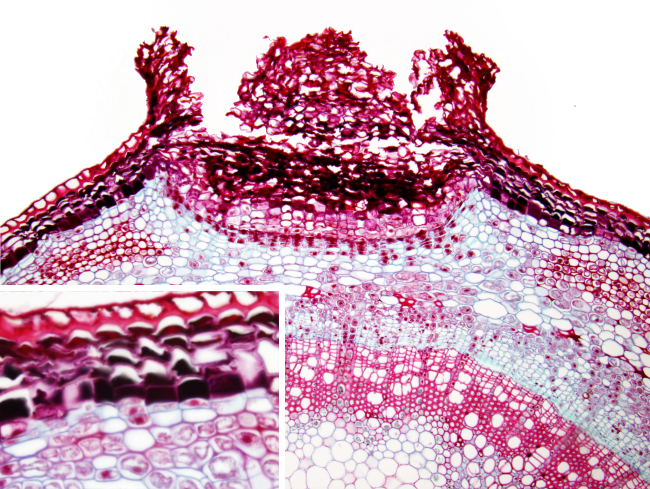Plant tissues. Protection.
PERIDERMIS

Species: elderberry (Sambucus nigra)
Technique: paraffin embedding. section stained with Alcian blue / safranin.
Periderm is composed of three layers. The initial layer is the cork cambium, also known as phellogen, whose cells have the typical features of undifferentiated cells. They divide mitotically by tangential planes to produce a number of layers of cork (phellem) outward and phelloderm inward. Cork cells undergo secondary wall thickening with suberin deposition, sometimes lignin. Then they die and form a very compact and impermeable barrier to water and gases. In contrast, phelloderm cells are living cells with no suberin and differ from the cortical parenchyma because they are arranged in piled rows.
Lenticels are lenticular or circular structures protruding from the surface of the stems and roots. They have a pore and underlying parenchyma showing thin primary walls that leave intercellular spaces. Lenticels are formed together with the first peridermis in those areas where the cork cambium is more active. As the epidermis grows thicker, new lenticels are produced. Lenticels function as passages for the gases interchange.
